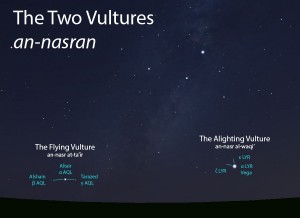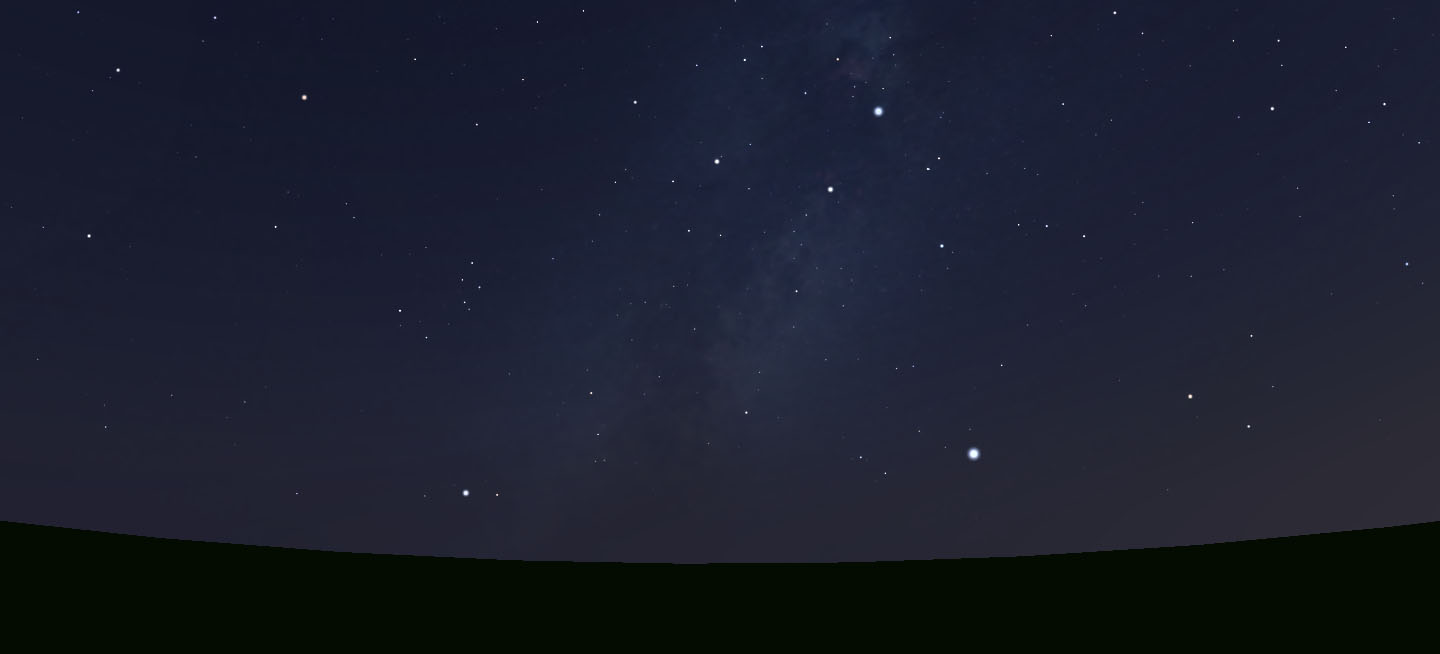Star Names
The Two Vultures (an-nasran)
The Two Vultures include the Alighting Vulture (an-nasr al-waqi’) and the Flying Vulture (an-nasr at-ta’ir). In modern-day Arabic, the term nasr more commonly indicates an eagle, but this was less common long ago. Back then, nasr designated a class of large birds known for plucking flesh with the curved ends of their otherwise flat beaks. The Egyptians revered the vulture for its utility in eliminating decaying animals, and the Arabs similarly regarded them favorably. The Flying Vulture was so named because the two moderately-bright stars lie in-line with the central brilliant star, like the wings of a vulture that is soaring.

The Two Vultures (an-nasran) as they appear setting in the west about 45 minutes before sunrise in mid-August. Sky simulations made with Stellarium.
Appearance
A pair of very bright stars that are spaced widely apart, each one with two less bright stars close to it.
Modern Identification
α LYR (Vega), blue-white star, magnitude 0.0
ε LYR, blue-white quadruple star, magnitudes 5.0, 5.1, 5.2 and 5.5
ζ LYR, blue-white double star, magnitudes 4.3 and 5.9
α AQL (Altair), white star, magnitude 0.8
β AQL (Alshain), yellow star, magnitude 3.7
γ AQL (Tarazed), yellow giant star, magnitude 2.7
Timing
The Two Vultures set together but rise about one month apart. On account of the precession of the equinoxes, today we can expect to observe the Two Vultures setting in mid-August and rising in early December and early January, as seen from the latitude of Tucson. (See How to Observe on the About page for more on this topic.)
Rain Stars
In the calendars of Qushayr and Qays, the morning settings of the Two Vultures marked the beginning of the rainy season of fruit harvest (al-kharif).
Lunar Stations
The Two Vultures are not one of the lunar stations.
Related Blog Posts
Auspicious Vultures in the Dark Sky

